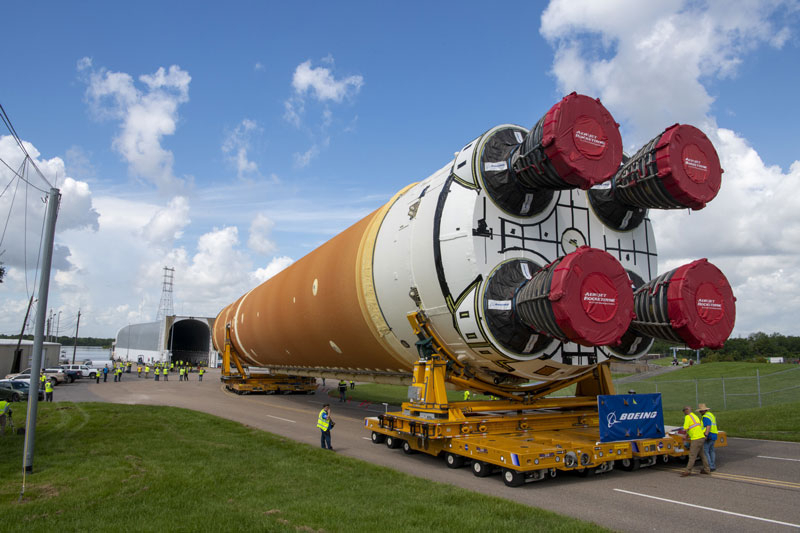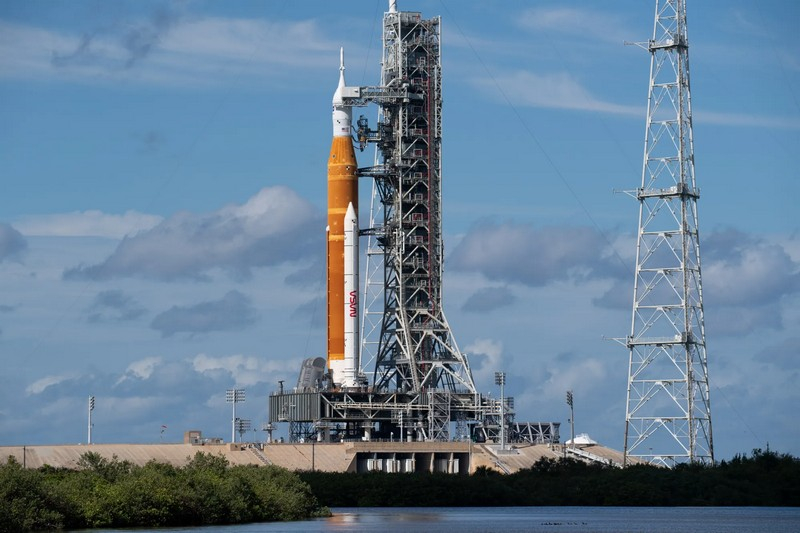The day before, NASA’s Office of Inspector General (OIG) published a report on the results of an inspection of Boeing’s production facility, which assembles Space Launch System rockets to deliver cargo and crews to the Moon. Inspectors found numerous violations at Boeing’s production and connivance among NASA management regarding the contract signed with the company, which was not actually observed.

Boeing has built the first stage for the SLS rocket that will send humans to the Moon for the first time in 50 years. Image source: Boeing
The inspectors’ audit focused on the production of the SLS version of the Block 1B launch vehicle, which is due to be launched in 2028 to carry out the Artemis-4 mission. In this version, the rocket should receive a 40% more powerful upper stage called Exploration Upper Stage (EUS). The increased payload should ensure the delivery to the Moon of a larger volume of equipment necessary for deploying a permanent human presence base on the satellite.
Boeing is assembling the rocket for the Artemis 4 mission at NASA’s Michoud Assembly Facility in New Orleans. Inspectors spent two years at this production site, studying the work of Boeing and contractors. They found, as documented in the report, numerous errors by company employees, including poor welding of oxygen tanks and metal and Teflon shavings left inside the liquid hydrogen tank, which caused work delays of seven months.
Overall, inspectors found low skill levels among the company’s production workers. The other side of this coin is the reluctance to take a job with high-level specialists due to the reduction of salaries in the company below industry levels, as well as the location of the enterprise, where there is a shortage of qualified personnel.
According to the Defense Contract Management Agency (DCMA), over two years Boeing received a record number of requests to fix certain “bugs” – 71 requests. Many of them were similar to those found by NASA and related to quality control, as in the case of the company’s commercial aircraft production: a lack of qualified and certified workers, a lack of order in the workplace, and a lack of control after repair work was carried out.
«”We found that Boeing’s quality management system did not meet industry standards at key stages of production,” the report said. “Given Boeing’s quality management and related personnel issues, we are concerned that these factors could potentially impact the safety of the SLS and Orion spacecraft, including their crew and cargo.”

If NASA’s program doesn’t stay on schedule, Boeing won’t be the only one to blame. The report notes that NASA changed earlier decisions, which led to delays in the Artemis program and budget overruns. For example, work on the Block 1B version of the rocket began in 2014, which assumed the use of the carrier for the Artemis-2 mission. NASA made a strong-willed decision to transfer the project to the Artemis-4 mission, which doubled the cost of the contract with Boeing.
NASA’s current estimated cost to build Block 1B is about $5 billion, but inspectors expect it to rise to about $5.7 billion due to cost overruns and program changes. Likewise, development costs for the EUS (enhanced upper stage) were projected at $962 million but will now rise to $2.8 billion, if not more, by 2028. NASA took money for these financial transactions from other programs, which buried or may bury many other interesting projects (the same VIPER lunar rover). Interestingly, NASA either did not want to analyze the situation with cost overruns, or hid it, so that regulatory authorities were not aware of the growing costs and delays in the production of the SLS Block 1B rocket.
To correct the situation, the Inspector’s Office offers four points:
- Develop a training program for Boeing contractors to ensure quality control is up to standard;
- Impose financial penalties on Boeing if the company fails to meet quality standards;
- Draw up a detailed timetable for the development of the EUS and ensure that it is adhered to;
- Work with the Defense Contract Management Agency to ensure compliance.
NASA agreed with three of these points, but does not want to fine Boeing if the contractor does not meet quality standards.
«NASA disagrees. NASA interprets this recommendation as an instruction to impose penalties that go beyond the scope of the contract, the agency said. “Imposing financial penalties outside the scope of the contract undermines the contract control process.”
The author of the source recommends seeking comments on the sanctions from the crew of the Boeing Starliner, stuck in orbit (it seems) until February 2025. However, Boeing took emergency measures. Yesterday, August 8, 2024, a new CEO of the company was appointed, who must save Boeing from plunging into the abyss of skill loss. It was Kelly Ortberg, who at the age of 64 was invited from retirement to head the aerospace giant. He is a practical engineer with impressive qualifications. He began his first day of work by visiting the company’s assembly shops and talking with workers. We’ll see what comes of this.